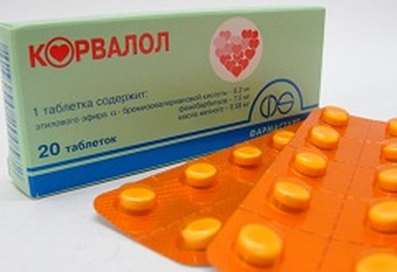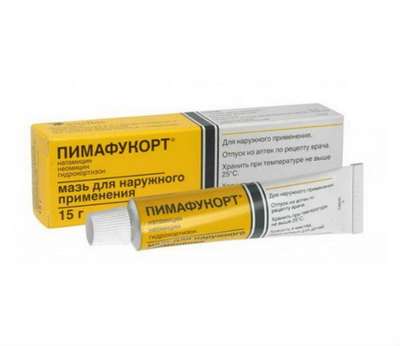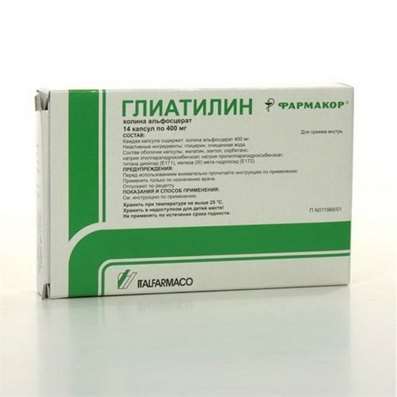Instruction for use: Insulin glargine (Insulinum glarginum)
I want this, give me price
Pharmacological group of substance Calcitonin
Insulins
Nosological classification (ICD-10)
E10 Insulin-dependent diabetes mellitus
Decompensation of carbohydrate metabolism, Diabetes mellitus, Diabetes insulin sugar, Diabetes mellitus type 1, Diabetic ketoacidosis, Insulin-dependent diabetes, Insulin-dependent diabetes mellitus, Coma hyperosmolar non-ketoacidotic, Labile form of diabetes mellitus, Violation of carbohydrate metabolism, Type 1 diabetes mellitus, Type I diabetes mellitus, Insulin-dependent diabetes mellitus, Type 1 diabetes mellitus
Characteristics
Long-acting insulin. Insulin glargine is an analog of human insulin obtained by recombinant DNA of bacteria of the species Escherichia coli (strain K12). Insulin glargine is a clear solution with a pH of 4. Molecular weight is 6063.
Pharmacology
Pharmacological action - hypoglycemic.
It binds to specific insulin receptors (binding parameters are close to those of human insulin), mediates a biological effect similar to endogenous insulin. Regulates glucose metabolism. Insulin and its analogues reduce glucose in the blood, stimulating glucose consumption by peripheral tissues (especially skeletal muscle and fat tissue), and also inhibiting the formation of glucose in the liver (gluconeogenesis). Insulin inhibits lipolysis in adipocytes and proteolysis, while enhancing protein synthesis.
After introduction into the subcutaneous fat, the acidic solution is neutralized with the formation of micro-precipitates, from which small amounts of insulin glargine are constantly released, providing a predictable, smooth (without peaks) profile of the concentration-time curve, as well as a long duration of action.
After the sc administration, the onset of action occurs, on average, after 1 hour. The average duration of action is 24 hours, the maximum - 29 hours. At a single dose per day (subcutaneously), the steady average concentration of insulin glargine in the blood is reached after 2 hours -4 days (day) after the first dose.
A comparative study of the concentrations of insulin glargine and insulin-isophane in blood serum in healthy people and patients with diabetes mellitus after subcutaneous administration of drugs revealed a slowed and much longer absorption, as well as a lack of peak concentration in insulin glargine compared with Insulin isophane.
In human subcutaneous fat, insulin glargine is partially cleaved from the carboxyl end of the B chain to form active metabolites: M1 (21A-Gly-insulin) and M2 (21A-Gly-des-30B-Thr-insulin). In plasma there are both unchanged insulin glargine, and the products of its cleavage.
Carcinogenicity, mutagenicity, effects on fertility
Two-year studies of the carcinogenicity of insulin glargine have been conducted in mice and rats when administered at doses up to 0.455 mg / kg (approximately 5 and 10 times higher than the human dose for p / to administration). The data obtained did not allow us to draw definitive conclusions concerning female mice, in view of the high lethality in all groups, regardless of the dose. Histiocytomas at injection sites were found in male rats (statistically significant) and in male mice (statistically insignificant) when using an acidic solvent. These tumors were not detected in female animals using salt control or dissolution of insulin in other solvents. The significance of this observation in man is unknown.
No mutagenicity of insulin glargine was detected in a number of tests (Ames test, mammalian hypoxanthine guanine phosphoribosyltransferase test), in chromosome aberration tests (cytogenetic in vitro (process or reaction in an artificial medium (in vitro)) on V79 cells, in vivo in Chinese Hamster).
In the fertility study, as well as in pre- and postnatal studies in males and female rats with n / k doses of insulin, about 7 times the recommended starting dose for human injections, a maternal toxicity caused by dose-dependent hypoglycemia, including several Lethal cases.
Indications
Diabetes mellitus, requiring insulin treatment, in adults, adolescents and children over 6 years of age.
Contraindications
Hypersensitivity.
Restrictions for use
Children under 6 years of age (safety and efficacy not determined).
pregnancy and lactation
Teratogenic effects. Reproduction and teratogenicity studies were performed in rats and Himalayan rabbits with insulin administration (insulin glargine and normal human insulin). Insulin was administered to female rats prior to mating, during mating and during pregnancy at doses up to 0.36 mg / kg / day (about 7 times higher than the recommended starting dose for human injections). Rabbits were injected with insulin in the period of organogenesis in doses of 0.072 mg / kg / day (about 2 times higher than the recommended starting dose for human injections). The effects of insulin glargine and normal insulin in these animals as a whole did not differ. There was no violation of fertility and early embryonic development.
For patients with pre-existing or gestational diabetes mellitus, it is important to maintain adequate regulation of metabolic processes throughout pregnancy. The need for insulin can decrease in the first trimester of pregnancy and increase during the II and III trimesters. Immediately after delivery, the need for insulin decreases rapidly (the risk of developing hypoglycemia increases). In these conditions, careful monitoring of glucose in the blood is essential.
It should be used with caution in pregnancy (strictly controlled clinical studies in pregnant women not carried out).
The action category for the fetus is FDA-C.
Use with caution in the period of breastfeeding (it is not known whether insulin glargine is excreted into breast milk of women). Nursing women may need to adjust the dosage regimen of insulin and diet.
Side effects
Hypoglycemia - the most common undesirable consequence of insulin therapy, can occur if the dose of insulin is too high compared to the need for it. Attacks of severe hypoglycemia, especially recurrent, can lead to damage to the nervous system. Episodes of prolonged and severe hypoglycemia can endanger the lives of patients. Psychoneurological disorders in the background of hypoglycemia ("twilight" consciousness or its loss, convulsive syndrome) are usually preceded by symptoms of adrenergic counterregulation (activation of the sympathetic adrenal system in response to hypoglycemia): hunger, irritability, "cold" sweat, tachycardia (the faster the hypoglycaemia develops And the more significant it is, the more pronounced the symptoms of adrenergic counterregulation).
Undesirable effects from the eyes. Significant changes in the regulation of blood glucose can cause temporary visual impairment due to changes in tissue turgor and the refractive index of the lens of the eye. Long-term normalization of blood glucose reduces the risk of progression of diabetic retinopathy. Insulin therapy, accompanied by sharp fluctuations in blood glucose, may lead to temporary worsening of the course of diabetic retinopathy. In patients with proliferative retinopathy, especially those who do not receive photocoagulation treatment, episodes of severe hypoglycemia can lead to the development of transient loss of vision.
Lipodystrophy. As with any other insulin medication, lipodystrophy and local absorption / absorption of insulin may develop at the injection site. In clinical studies with insulin therapy with insulin glargine, lipodystrophy was observed in 1-2% of patients, whereas lipoatrophy was generally uncharacteristic. The constant change of injection sites within the body regions recommended for insulin administration may help to reduce the severity of this reaction or prevent its development.
Local reactions in the field of administration and allergic reactions. In clinical trials with insulin therapy with insulin glargine, reactions at the site of administration were observed in 3-4% of patients. These reactions included redness, pain, itching, hives, swelling, or inflammation. Most minor reactions at the site of insulin administration are usually resolved in a period of time from a few days to several weeks. Allergic reactions of immediate type hypersensitivity to insulin are rare. Similar reactions to insulin (including insulin glargine) or excipients may be manifested by the development of generalized skin reactions, angioedema, bronchospasm, arterial hypotension or shock and may thus pose a threat to the patient's life.
Other reactions. The use of insulin can cause the formation of antibodies to it. In clinical trials in groups of patients treated with insulin-isophane and insulin glargine, the formation of antibodies that cross-reacted with human insulin was observed at the same frequency. In rare cases, the presence of such antibodies to insulin can cause the need for correction of dosing in order to eliminate the tendency to develop hypo- or hyperglycemia. Rarely, insulin can cause delay in sodium excretion and edema, especially if intensified insulin therapy leads to an improvement in previously inadequate regulation of metabolic processes.
Interaction
Pharmaceutically incompatible with solutions of other drugs (drug). Insulin glargine should not be mixed with other insulin preparations or diluted (with mixing or dilution the profile of its action over time may change, in addition, mixing with other insulins can cause precipitation). A number of drugs affect the metabolism of glucose, which may require correction of the dose of insulin glargine. To drugs that can increase the hypoglycemic action of insulin and increase the predisposition to the development of hypoglycemia include oral hypoglycemic agents, ACE inhibitors (angiotensin converting enzyme), disopyramide, fibrates, fluoxetine, MAO inhibitors (monoamine oxidase), pentoxifylline, propoxyphene, salicylates and sulfonamide antimicrobials. To the drug (drug), which can weaken the hypoglycemic action of insulin, include glucocorticoids, danazol, diazoxide, diuretics, glucagon, isoniazid, estrogens, gestagens, somatotropin, sympathomimetics such as epinephrine, salbutamol, terbutaline and thyroid hormones, protease inhibitors, Derivatives of phenothiazine, olanzapine, clozapine.
Beta-adrenoblockers, clonidine, lithium salts, alcohol - can both enhance and weaken the hypoglycemic action of insulin. Pentamidine may cause hypoglycemia, which is sometimes replaced by hyperglycemia. Under the influence of such sympatholytic drugs as beta-blockers, clonidine, guanfacine and reserpine, the signs of adrenergic counterregulation may be reduced or absent.
Overdose
Symptoms: severe and sometimes prolonged hypoglycemia, which threatens the patient's life.
Treatment: episodes of moderate hypoglycemia are usually stopped by ingestion of digestible carbohydrates. It may be necessary to change the dosage regimen of the drug, diet or physical activity. Episodes of severe hypoglycemia, accompanied by coma, convulsions or neurological disorders, require IM / IM (intramuscular) or subcutaneous (subcutaneous) administration of glucagon, as well as intravenous injection of a concentrated dextrose solution. It may be necessary to take carbohydrates for a long time and observe the specialist, since Hypoglycemia can recur after visible clinical improvement.
Routes of administration
PC.
Precautions
It is not a drug of choice for the treatment of diabetic ketoacidosis (in such cases, the introduction of short-acting insulin is recommended).
The experience of the application is limited, so it was not possible to evaluate its effectiveness and safety in the treatment of patients with impaired liver function or with moderate-to-severe or severe renal insufficiency. In patients with impaired renal function, the need for insulin may decrease due to the weakening of the processes of its elimination. In elderly patients, progressive deterioration of kidney function can lead to a persistent decrease in insulin requirements. In patients with severe hepatic insufficiency, the need for insulin can be lowered due to a decrease in the ability to gluconeogenesis and biotransformation of insulin. In case of ineffective control over the level of glucose in the blood, as well as in the presence of a tendency to develop hypo- or hyperglycemia, before proceeding with the correction of the dosing regimen, it is necessary to check the accuracy of compliance with the prescribed treatment regimen, the injection site and the technique of competent injection of injections, Considering all factors relevant to the problem.
Hypoglycemia. The time of development of hypoglycemia depends on the profile of the action of the insulin used and can thus change with a change in the treatment regimen. Due to an increase in the time of insulin administration of a prolonged action in the use of Lantus, the likelihood of developing nocturnal hypoglycemia decreases, whereas in the morning hours this probability may increase. Patients who have episodes of hypoglycemia may have a particular clinical significance, such as patients with severe stenosis of the coronary arteries or cerebral vessels (risk of cardiac and cerebral complications of hypoglycemia), as well as patients with proliferative retinopathy, especially if they do not receive photocoagulation treatment (risk Transient loss of vision due to hypoglycemia), special precautions should be followed, and it is also recommended to intensify monitoring of blood glucose. Patients should be aware of the circumstances in which symptoms-precursors of hypoglycemia may change, become less pronounced or absent in certain risk groups, incl. In patients who have significantly improved regulation of blood glucose; In patients who develop hypoglycemia gradually; In elderly patients; In patients with neuropathy; In patients with prolonged course of diabetes mellitus; In patients with mental disorders; In patients receiving concomitant treatment with other medications (see "Interaction"). Such situations can lead to the development of severe hypoglycemia (with possible loss of consciousness) even before the patient realizes that he develops hypoglycemia.
In the event that normal or decreased glycosylated hemoglobin levels are noted, the possibility of developing recurrent unrecognized episodes of hypoglycemia (especially at night) should be considered.
Patient compliance with the dosing regimen, diet and diet, proper use of insulin and control over the appearance of hypoglycemia symptoms contribute to a significant reduction in the risk of developing hypoglycemia. Factors that increase the predisposition to hypoglycemia, require particularly careful observation, because Can cause the need to adjust the dose of insulin. These factors include: a change in the place of insulin administration; Increased sensitivity to insulin (for example, when stress factors are eliminated); Unusual, increased or prolonged physical activity; Intercurrent diseases, accompanied by vomiting, diarrhea; Violation of diet and diet; Missed food intake; Alcohol consumption; Some uncompensated endocrine disorders (eg, hypothyroidism, adenohypophysis failure or adrenal cortex); Concomitant treatment with some other drugs.
Intercurrent diseases. When intercurrent diseases require more intensive monitoring of blood glucose. In many cases, the analysis of the presence of ketone bodies in the urine is shown, and often a correction of the insulin dosage regimen is required. The need for insulin is often increased. Patients with type 1 diabetes should continue to regularly consume at least a small amount of carbohydrates, even if they are able to consume only small amounts of food or can not eat at all if they have vomiting and the like. These patients should never completely stop the introduction of insulin.

 Cart
Cart





